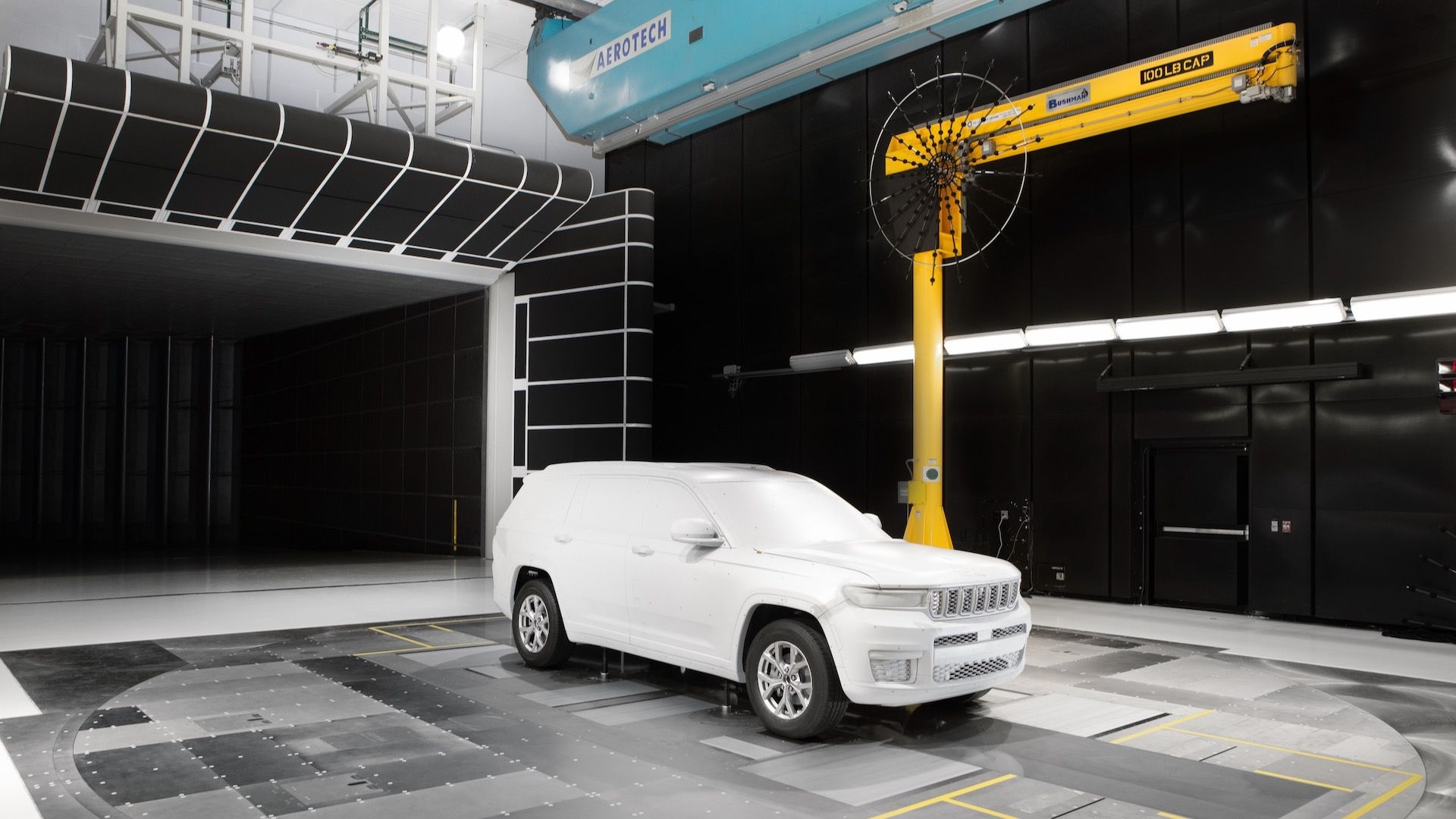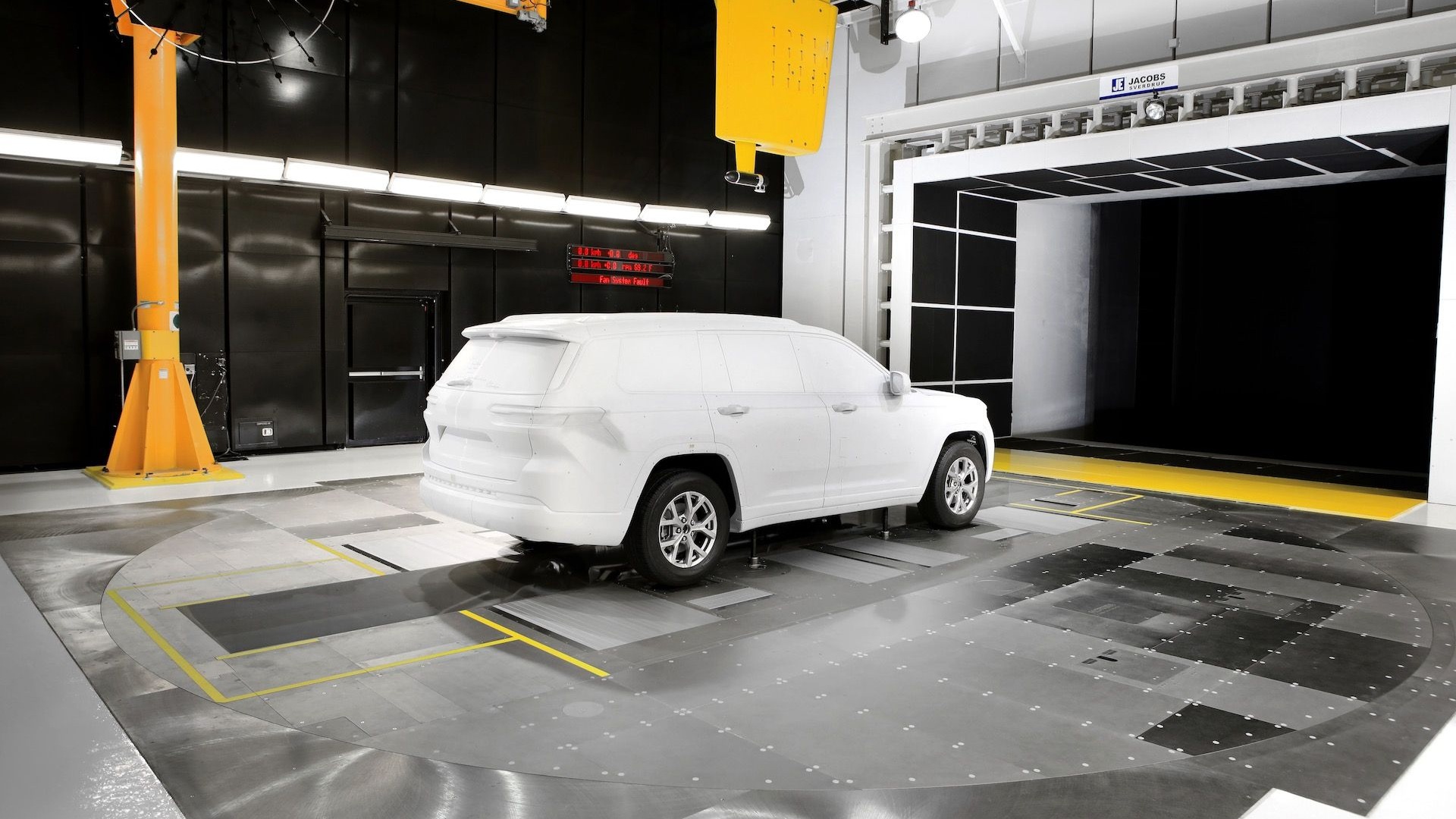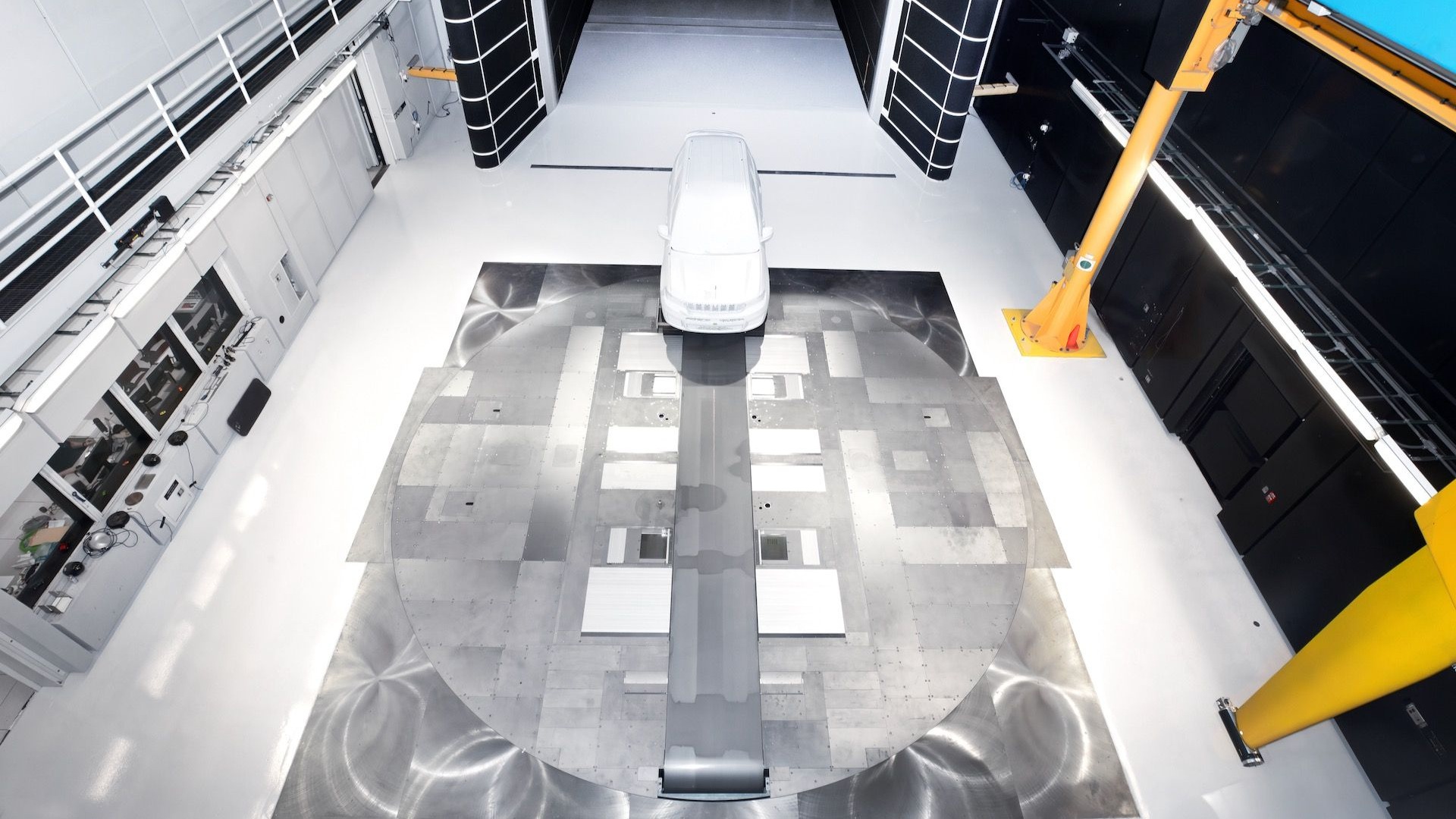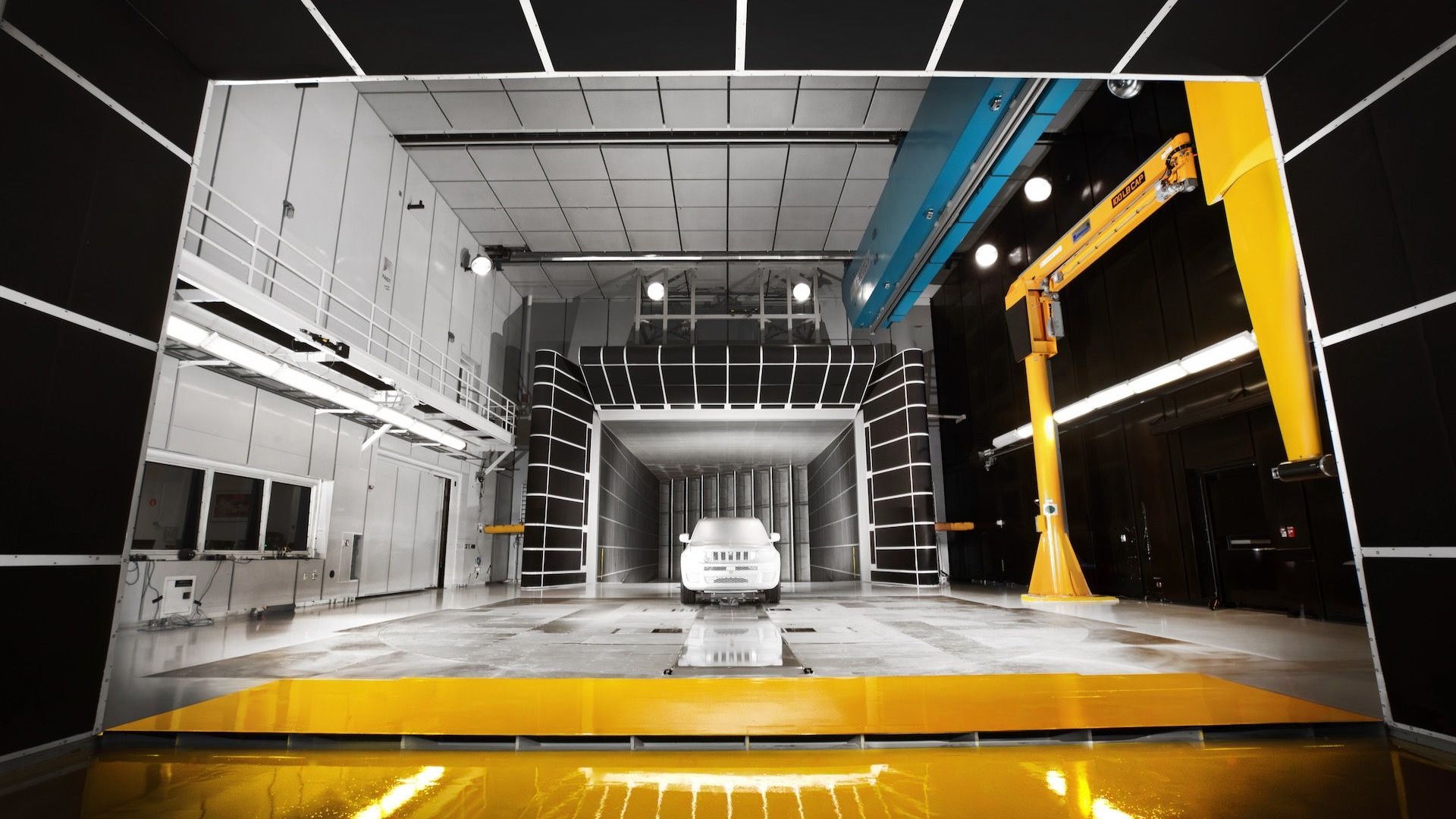Stellantis has upgraded the wind tunnel located near its U.S. headquarters in Auburn Hills, Michigan, in its quest to boost range of electric vehicles by reducing drag.
The automaker on Wednesday said it invested $29.5 million in the site to add moving ground plane technology, essentially a rolling surface.
Each wheel gets its own belt that operates just like a treadmill, while a fifth belt runs longitudinally beneath the vehicle, which mimics on-road travel conditions.
The setup allows the wheels of the test vehicle to rotate at realistic speeds rather than remain static, which enables engineers to gather more accurate measurements of airflow resistance from the wheels and tires. The wind tunnel, which has been in operation since 2002, is capable of generating wind speeds of more than 160 mph.

Stellantis wind tunnel in Auburn Hills, Michigan
Stellantis said airflow resistance from wheels and tires alone can affect real-world aerodynamic drag by up to 10%. Reducing this can boost range and as a result could lead to smaller batteries, which in turn could lead to cost and weight savings, the automaker added.
Stellantis already uses moving ground plane technology at other sites, though those sites are focused on smaller vehicle platforms. Engineers at the Auburn Hills site will focus on larger vehicles, particularly those based on the STLA Large and STLA Frame platforms.
The investment comes as Stellantis looks to curb costs in other areas. In addition to reducing staff, Stellantis is also in the process of winding up a test facilty in Yucca, Arizona. CEO Carlos Tavares, who will retire in early 2026 at the end of his current contract, also warned in July that some of Stellantis' 14 brands could be dropped if they continue to underperform. His warning came after the company reported earlier in the month a decline of 48% in net profits year-over-year, mostly due to declining sales in the U.S.





